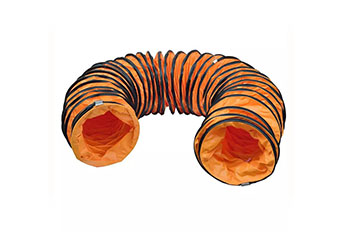E-mail: info@sp-vent.com
2020
The Best Air Duct Cleaning Method
The best air duct cleaning method is a method that suits your specific air duct conditions and effectively solves the internal air quality problems. Although it is not recommended that every household clean the pipes, it is an important tool in the overall strategy of protecting the family’s breathing air.
The entire air volume of the house circulates through the duct more than five times a day. Particles and other pollutants in the air are continuously deposited in the pipes and then recycled into the living space. In the past few years, the accumulation of dust, dirt, and microorganisms (such as mold and bacteria) can reach levels that affect indoor air quality and may cause irritation and allergic reactions to susceptible people-not to mention constant housekeeping headaches and Endless dust removal.
Since ordinary homemakers cannot access many pipe networks inside the house, homeowners usually only have limited pipe cleaning. However, taking the following simple steps may bring some benefits:
Turn off the air conditioner or heating furnace on the thermostat.
Use a gap tool to vacuum the vents of each room.
Unscrew the vent cover, and then clean it to remove all dust.
When the ventilation holes are covered and dry, install the gap tool on the longest extension tube available. Insert the tool into the pipe as much as possible, and clean the inside of the pipe with a vacuum cleaner.
Reinstall the vent cover.

Flexible Ducting
The comprehensive procedure will include a visual inspection of the span of all plumbing systems, including those that are inaccessible to ordinary homeowners, such as the attic or crawl space under the house. A well-trained inspector will issue an alert to the red flag, such as:
Dust and dirt layer attached to the internal surface of the pipe
Evidence of mold growth in the pipeline
Condensation is a sign of water pollution or moisture damage.
Pests
Dust infiltration causes signs of wear of HVAC components
Dirty filters and other maintenance issues, such as air leaks in pipes, resulting in air pollution.
The best Flexible Ducting cleaning method is divided into four stages:
Access: Access to the inside of the pipe by removing the access panel or pipe components (such as end caps and air diffusers). If there is no access point for inserting the cleaning tool, the technician will cut the access hole in the duct system. After the procedure is completed, these holes will be professionally closed and sealed.
Loose contaminants: For many years, dust, mold, and other residues may have accumulated inside the piping system. An effective cleaning procedure begins with agitation with electric soft brushes, high-pressure air nozzles, and other techniques (including simple manual brushing) to eliminate deposits in the pipeline. HVAC equipment installed in the airflow (such as air conditioning coils and blowers) will also be cleaned.
Negative pressure: Before removing dust, dirt, and loose pollutant residues from the pipeline system, precautions must be taken to prevent these pollutants from infiltrating the indoor environment of the house again. Using powerful vacuum cleaners usually installed on trucks, negative pressure is generated in the pipes, and dust and dirt are contained in the cleaning process.
Removal: After connecting the vacuum to the piping system and energizing, remove contaminants from each access point of the piping system. All air exhausted from the duct by the vacuum is exhausted through a medical-grade filter. The removed contaminants are sealed in bags.
Follow this step to reinstall all removed components. A new air filter will be installed and the system will restart. All ventilation holes in the house will be checked to ensure proper ventilation.
Ask us for more advice on Flexible Air Ducting cleaning methods to protect the air in your home.
+86 757 8881 8835
+86 159 2073 7023
+86 757 8881 8836
66 Funing RD., Fuwan Gaoming, Foshan China
Keywords: Flexible Duct, Heat Resistant Duct, Heat Resistant Duct, Movable Ventilator...
Copyright © Foshan Senpeng Ventilation Co., Ltd. All Rights Reserved Sitemap | Technical Support: 

